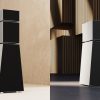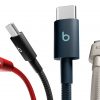Knowledge@Wharton
As the buzz builds for tablet computers, both tech savvy consumers and the tech impaired are hoping to find one under the Christmas tree. And companies that run the gamut from BlackBerry maker Research in Motion to Barnes & Noble are hoping to unseat Apple from the Santa role.
Apple has essentially had the tablet market to itself since April 30, the day the iPad became available in the United States. Since then, the company reports selling more than seven million of the 10-inch devices — which combine the portability of a smartphone or e-reader with the power of a laptop or desktop computer — including 4.19 million in the quarter ending September 30. Distribution channels for the iPad are growing as well. Since July, Apple has been selling the device at Best Buy, Target, Wal-Mart and Amazon.com, in addition to company-owned stores and its website. Expansion into international markets, including China (where the iPad launched on September 17) is expected to fuel more growth, according to a research report by Stifel Nicolaus analyst Doug Reid. Reid estimates that Apple will sell 6.5 million iPads in the fourth quarter of 2010.
Apple's head start is formidable, industry observers point out, and creates major challenges for other companies hoping to cash in on the tablet craze. While some competitors are hoping the lure of smaller size or special features will give their devices an edge over the iPad, others are targeting niche markets, including business executives and health care workers. But all will need time to work out the kinks involved with introducing new technology. And while Wharton experts and others acknowledge that the market is large enough to support multiple players, they say it is unclear whether these new entrants will have the right formula for success in this age of device experimentation.
"It's not too late for new tablets," notes Saikat Chaudhuri, a management professor at Wharton. "You can compete on technology or distribution as you try to reach your installed base. You can also compete in a niche segment if [that segment is] large enough."
Experts at Wharton say the tablet market is shaping up similarly to the smartphone industry: Apple creates a popular device in the iPhone, defines the features that consumers come to expect, and rivals follow, attempting to capture the market with gadgets of their own. Competitors have been gaining ground in that market — smartphone devices powered by Google's Android operating system, for example, have surpassed Apple in market share, according to Nielsen. A third of smartphones sold in the past six months have been powered by Android; Apple captured 25% of sales during the same period. "Smartphones are a multi-vendor space and tablets will likely be the same," notes Kendall Whitehouse, director of new media at Wharton.
The iPad accounted for about 95% of global tablet shipments in the third quarter of 2010, while only 2% were devices powered by Android, according to a study by Strategy Analytics reported in The Wall Street Journal. Overall shipments of tablets increased by 26% in the same period, the study said. The study's authors expect the percentage of non-Apple devices to rise as other companies enter the tablet market. During Apple's earnings conference call on October 18, however, CEO Steve Jobs delivered the opposite view about what is often predicted to be an influx of tablets set to hit store shelves in the coming months. "First, it appears to be just a handful of credible entrants, not exactly an avalanche. Second, almost all of them use seven-inch screens, as compared to iPad's near 10-inch screen," Jobs said. "We think the current crop of seven-inch tablets [is] going to be DOA — dead on arrival."
Although it is hard, if not impossible, to recreate the iPad's buzz, the device itself is not invincible, experts warn. "How do you attack the iPad?" asks Wharton marketing professor Peter Fader. "There are a lot of ways the iPad leaves you short," including a lack of support for multi-tasking and the absence of Adobe's Flash player, which is used to power multimedia on many websites. Although Fader warns that "fighting with features isn't a winning battle," Wharton marketing professor Eric Bradlow advises competitors to "try to find attributes that make your tablet a superior product."
Beyond the Buzz
Among the players preparing to break into the market is Research in Motion, which will launch the seven-inch BlackBerry PlayBook in 2011. The device, which features multimedia management software and security tools for corporations and can connect wirelessly to BlackBerry phones, is "screaming business executive," according to Gartner analyst Matthew Davis. Research in Motion officials hope the PlayBook will entice BlackBerry users with the incentive of more screen space than the phone offers to work with documents, e-mail and other business-related needs. Because the two devices use the same wireless connection, customers would not have to purchase a separate data plan for 3G services. "The BlackBerry is successful for what it does more than the brand," Fader notes. "The more RIM moves away from the BlackBerry features, the more risk it faces."
Samsung is looking for mass-market appeal with its soon-to-launch seven-inch tablet, the Galaxy Tab. In addition to selling a Wi-Fi only model, the company has forged deals to sell versions of the Android-powered device that are price-subsidized when bundled with two-year data plans through wireless carriers AT&T, Sprint, T-Mobile, U.S. Cellular and Verizon. While data plans for Apple's iPhone are offered exclusively through AT&T, the company recently completed a deal that allows Verizon to begin selling iPads bundled with its data plan. Part of Samsung's marketing pitch is that the Galaxy Tab provides the same features as the iPad in a less bulky package. The Samsung Tab has two cameras, a feature Apple's gadget lacks, and like RIM's PlayBook, supports media using Adobe Flash. "If rivals can fill [the iPad's] functional gaps quickly, they can get traction," Chaudhuri points out. "There's a crowd that just wants something functional and doesn't care if it's Apple."
Samsung has the best shot at competing with the iPad, according to Kartik Hosanagar, a Wharton operations and information management professor. "I really like Samsung's approach. It can leverage Android's success in the smartphone market. Samsung is sticking to its strengths and bringing in a dominant software partner." Bradlow notes that because Android is used on devices from a number of manufacturers, tablets running that system can position themselves as the more versatile choice in terms of content available. "At the end of the day, an open architecture leads to better apps," he adds. "That's where the gold is."
Hybrids, Niches and Cost-Cutters
The iPad's starting price of $499 sets the price for the high-end of the market, experts at Wharton say. Samsung's Wi-Fi only Galaxy Tab will also start at $499, while Research in Motion has not disclosed pricing for its Playbook. Other competitors are entering the market with lower priced options like Barnes & Noble's NOOKcolor, a seven-inch Android-based e-reader/tablet hybrid currently for sale at $249.99. At an even lower end of the spectrum is Cherrypal's seven-inch CherryPad for $188. Dell's five-inch Streak tablet starts at $299.99 with the purchase of a two-year data plan (without the plan it is $549.99). The Streak, one of the more diminutive tablets entering the market, is being promoted by Dell to the health care market as the perfect size to fit in the lab coat pocket of a doctor or nurse. "We are making electronic patient information accessible to physicians and clinicians in a form … that is easy for them to use," Jamie Coffin, vice president of Dell Healthcare and Life Sciences, said in a statement.
While Hosanagar acknowledges that tablets like Dell's or RIM's can be tailored to be effective in specific industries, he notes that the real money is in mass adoption. "I can see how a firm can dominate a vertical by focusing on specific industry applications. But I don't see how focusing on niche verticals will help large companies like Dell. The spoils are in the consumer market. I don't think success in some niche area will translate to success in the mainstream consumer market." Bradlow, however, suggests that "one gets product adoption one niche or one segment at a time. This approach builds on RIM's [and Dell's] strengths."
With many new tablets hitting the market — a number of which are slated to launch in early 2011 — the field could quickly become saturated. Cisco, Toshiba and Hewlett-Packard are also planning to begin selling their answer to the iPad in the near future. As the tablet battles play out, experts expect the market to take plenty of twists and turns.
When Apple introduced the iPad, the device quickly began to overshadow the markets for e-readers and netbooks. The e-reader is of similar size to the iPad but was introduced as a single function device for reading books, magazines or newspapers. The iPad has its own bookstore and an interface for reading digital books, but is a multi-function device that also allows users to play games, peruse their e-mail and surf the Internet. In addition to Barnes & Nobles' e-reader/tablet hybrid, Hosanagar expects that Amazon — which started the e-reader trend when it introduced the Kindle in 2007 — may also become a potential iPad competitor. "I am betting that Amazon is going to come up with a next generation device that not only transforms the Kindle, but perhaps bundles it with services in a manner that is classic Amazon."
Netbooks — smaller, more lightweight and lower-priced laptop computers — dominated electronics advertising during the last few holiday seasons but have since waned in popularity. A recent survey of 3,108 consumers by market research firm ChangeWave found that 14% of those who planned on buying a laptop in the next 90 days said it would be a netbook. That is compared to 18% at the beginning of this year and down 10 points from the peak netbook buying period in June 2009. During the same period, buying plans for traditional laptops and desktop computers remained largely unchanged, the firm reported. In addition, 26% of those surveyed said they were likely to buy a tablet in the future (80% of that number planned to purchase an iPad).
Fader suggests that one way for competitors to stand out in the tablet field is to take a cue from what made netbooks successful initially. "These rivals could step away from the touch tablet form," Fader says. "What if Apple's rivals [introduced] a netbook done right, with a touch screen and keyboard? You couldn't call it a netbook, but one way to beat the iPad is to … make something small, fast and differentiated." Indeed, by the end of the year Dell plans to introduce the Inspiron Duo, a 10-inch tablet with a flip lid that allows the device to be converted into a netbook with a keyboard.
According to Chaudhuri, the next few months will provide clarity as to which customers are buying tablets and which features are most attractive to them. "People are used to having multiple devices depending on the scenario. The netbook wasn't a substitute for the laptop, and the tablet may not replace the netbook," he says. "My wish list is to have everything in one device that could expand or shrink. Absent massive changes in physics, that's not going to happen."
Reprinted with permission from Knowledge@Wharton, the online research and business analysis journal of the Wharton School of the University of Pennsylvania






























